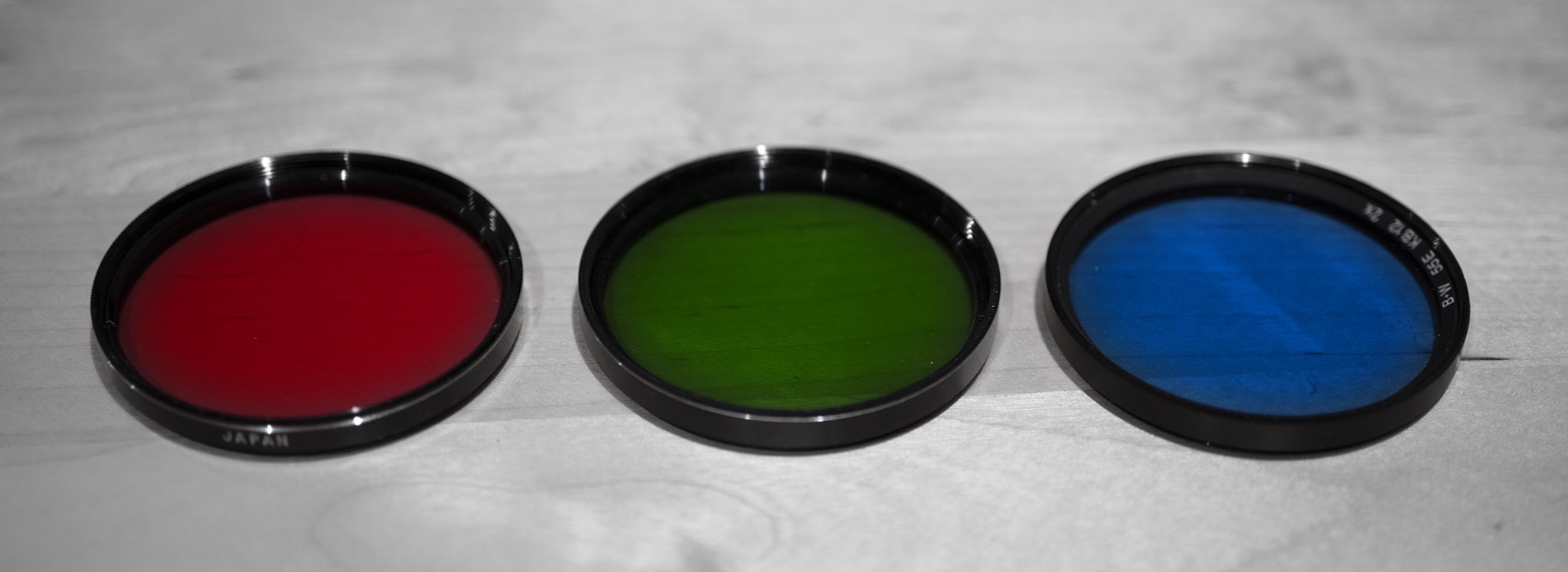Color film, in any way, shape or form, has existed for about a century now. C-41, now the standard process for colors photos has come into existence in the ‘70s. However, it does not mean that there was no way to make color photos.Color film, in any way, shape or form, has existed for about a century now. C-41, now the standard process for colors photos has come into existence in the ‘70s. However, it does not mean that there was no way to make color photos.
A bit of history here. Using a red, green and blue filter, you can filter out the « channels » you’ll need to make a color photo. There has been multiple way of doing so, but in our case, it’s what interests us.




Essentially, trichrome is just a fancy way of saying combine 3 different images, with added complexity, only to have worse results than any C-41 photo. So why would one ever do that!
You know what I say here, we wouldn’t be doing film if you wanted perfect results every time, we do it for fun! And experimenting is part of the fun. So I procured myself a skit of trichrome filters for my trusty Spotmatic (well not quite, but there ain’t nothing you can’t do with a set of step up rings)
It should be noted that you will need a tripod to make trichrome photography, and that you’ll most likely want your subject to be absolutely still, otherwise the Harris shutter effect will make a 6-colored mess out of your pictures.
Jokes aside, moving clouds, humans, pets, anything will create a somewhat interesting effect that can’t be reproduced through any other means.
For shooting, any panchromatic BW film will do. RPX, HP5, FP4, anything. Do avoid orthochromatic films and semi ortho films like Fuji Acros however, they will make your life a pain. Their lack of sensitivity to red light will force you to overexpose one layer, and that’s no fun. Trust me.
Extended sensitivity films such as Ilford’s SFX or Rollei’s Superpan and Retro lineups can lead to color shifts, but it can be something to experiment with.
Infrared film can also be used to reproduce the famed Kodak Aerochrome look, but you will need an R72 filter to achieve it, effectively replacing the red channel with an infrared channel.
As for the end result, I’ll let you guys decide for yourself. Keep in mind that my filters were not of the utmost quality in the filtration of the colors, but it was a fun experience nonetheless. There are quite a few effects that can be achieved with various movements between frames.

People and other relatively quick moving objects will leave a colored « ghost » behind, as you can see here.

The sun setting creates those colored and undefined shadow edges. You can also see the clouds moving in the windows of the adjacent building.

The absolutely wild color shifts here are caused by a great change in the scene, in this case, the subway coming and leaving. However, the man in the picture stays consistently in the frame since he’s on 2 of the color channels.

This somewhat boring trichrome could be mistaken as a normal color shot since nothing is moving.

In this one, since the object is moving on itself, you can see that everything is all well and good, except for the object itself. It’s an interesting effect, and definitely one of the most interesting to play around with.
As you can see, there are many things you can do with trichrome photography, and while there’s no way to get absolutely accurately exposed images every time, it’s still a creative process that i wildly recommend that you try for yourself. A few tips for starting out in trichroming is to take it slow, to make sure that your filter sequence stays the same throughout your roll. I like to keep my shots organized as R-G-B, so it’s easier in Photoshop, but at the end of the day it doesn’t really matter. The best thing you can do is try, mess up, and learn from that mistake.
I hope I’ll have inspired you to create your own images, and I can only wish for you to have as much fun as I did making my own images.
See you in the next one!
